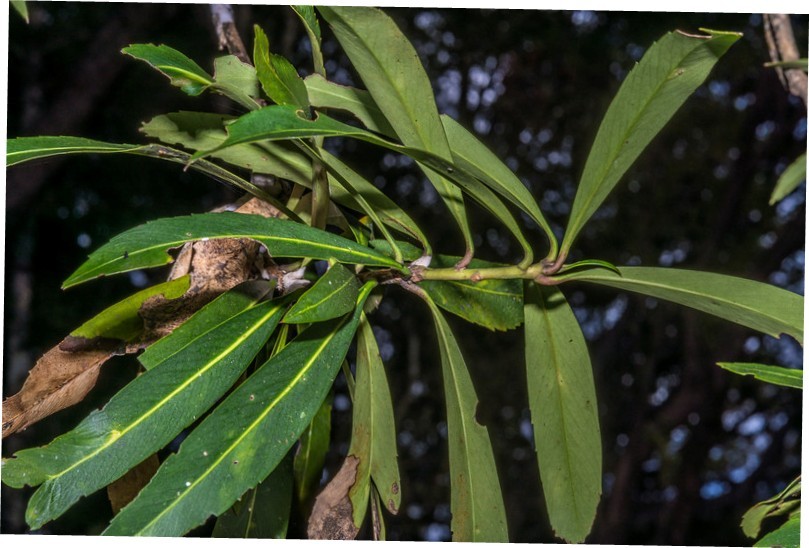Horoeka
(Pseudopanax crassifolius)

Description
Pseudopanax crassifolius, the horoeka or lancewood, is a New Zealand native tree belonging to the family Araliaceae. It is found throughout New Zealand from sea level up to about 750 m. The juvenile form, which lasts for between 15 and 20 years, is very easily recognized. The leaves are stiff and leathery with a prominent central rib, about 1 cm wide and up to 1 m long with irregular teeth, all growing downwards from a central stem. The young trunk has characteristic vertical swollen ridges. As the tree gets older the stem begins to branch, producing a bushy top, and the leaves become wider and shorter, losing their teeth. It is only when the tree is mature that it adopts a typical tree shape. One of the theories about this curious change of appearance is that the young plant had to protect itself against browsing by the moa, the giant flightless bird that roamed New Zealand's bush in prehistoric times. Once above moa height, it was out of danger and turns into a "regular" tree. A study of leaf colour development in P. crassifolius found that leaves of seedlings would blend with leaf litter, while juvenile leaf colouration would draw attention to their spines. A closely related Chatham Island species, which evolved in the absence of moa, did not display these changes. Closely related is Pseudopanax ferox, the toothed lancewood. It is similar to P. crassifolius except the leaves are more abundant and severely toothed, resembling remotely a bandsaw blade. Pseudopanax (Latin for "false ginseng") is a small genus of 12–20 species of evergreen plants, the majority of which are endemic to New Zealand. Flowers of the genus occur in terminal umbels. Pseudopanax occur in forest or scrub environments. The genus contains some remarkable small trees with distinctly different juvenile and adult forms, such as Pseudopanax crassifolius and Pseudopanax ferox (commonly referred to as 'lancewood' and 'toothed lancewood', respectively). Pseudopanax arboreus (common name "five-finger") is a very common small tree in New Zealand native forests. Pseudopanax simplex occurs on the North Island south of the Waihou River; in Westland and other South Island forests; as well as on Stewart Island. A 2000 molecular study established that several species within the genus were only distantly related to the core group of New Zealand species related the type species P. crassifolius. They were removed to the genus Raukaua.
Taxonomic tree:







